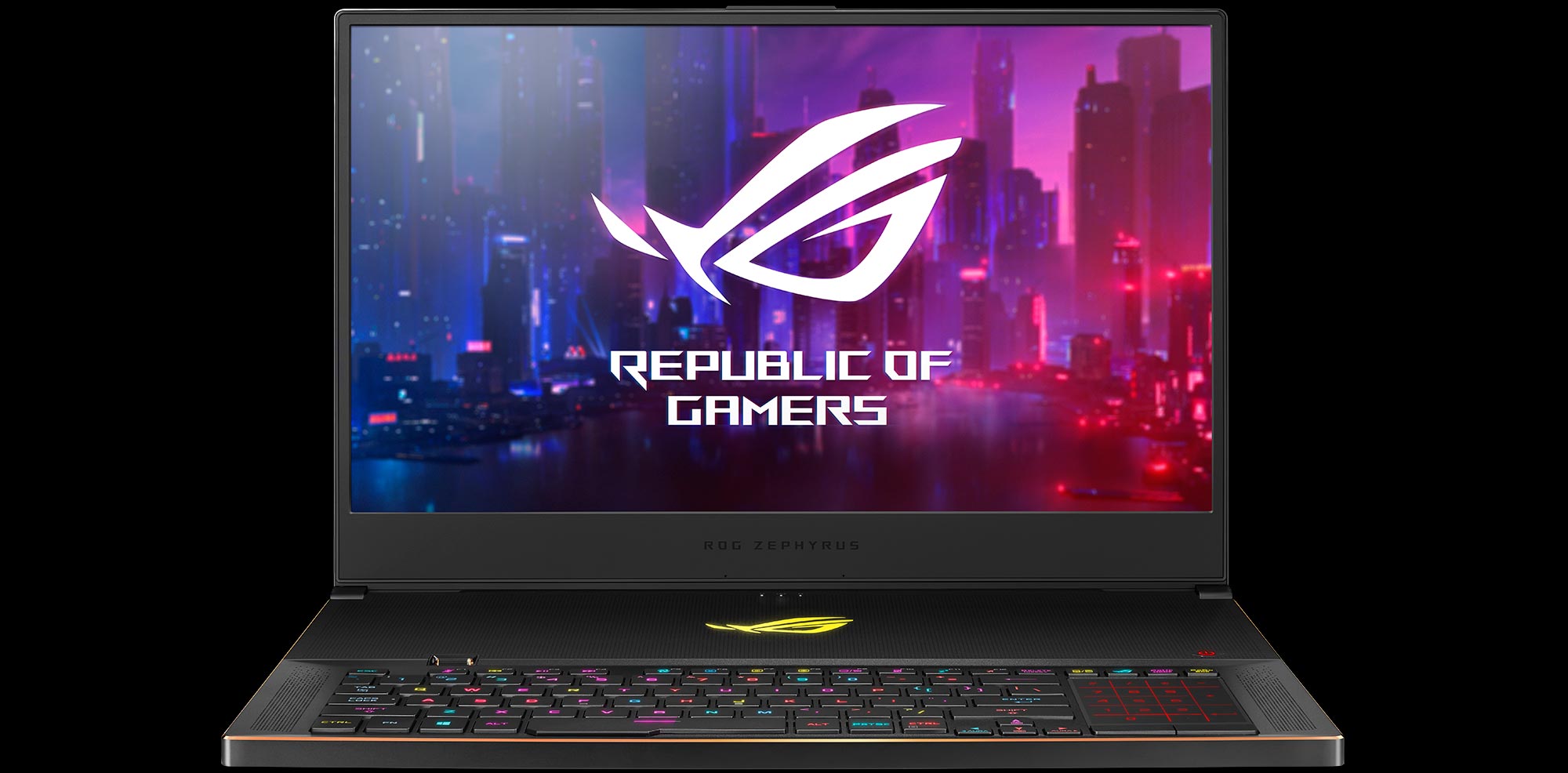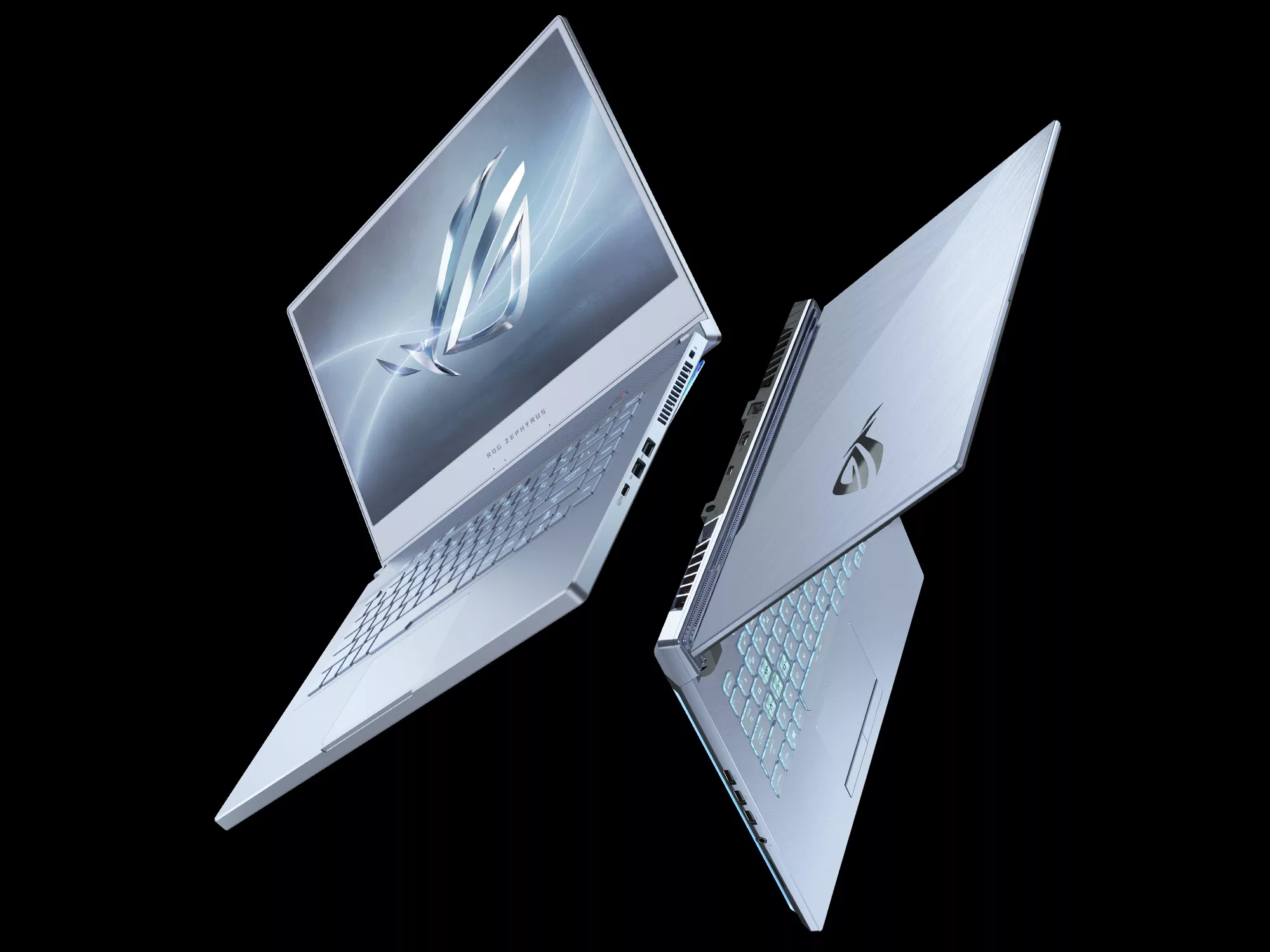ROG reveals the first 300Hz gaming laptops at IFA Berlin 2019
The Republic of Gamers focuses on not only delivering the fastest gaming devices, but also translating that speed into a more responsive and immersive experience. That’s why we’ve aggressively adopted high-refresh laptop displays that let you see more frames per second. These supercharged screens make gameplay feel smoother, especially in fast-paced esports titles, and they can even provide a competitive advantage over your opponents.
ROG was the first to bring high refresh rates to gaming laptops, and we’ve been leading the industry ever since. At IFA Berlin 2019, we’re raising the bar again by showcasing 300Hz displays that qualify as the world’s fastest. Panel technology demos in multiple Strix and Zephyrus gaming laptops provide a glimpse into the future of portable esports and hardcore gaming. They also preview a special 300Hz version of the ultra-slim Zephyrus S GX701 that’s due later this year.

A brief history of high-refresh gaming laptops
ROG ignited high-refresh innovation for gaming laptops starting in 2016 with the G752VS, whose 120Hz IPS-level panel produced excellent colors and viewing angles despite doubling the frequency of conventional displays. We soon added more 120Hz models and also helped initiate a project with chemical giant Merck to develop a new liquid crystal structure capable of pushing even higher speeds. That work allowed us to introduce the first 144Hz gaming laptops the following year with the original G703 desktop replacement and the more portable Strix GL503VS SCAR Edition.
While faster refresh rates make gameplay look and feel smoother, quicker pixel transitions reduce blurring for fast-moving objects and sweeping motions to produce a clearer picture that helps you track targets and maintain immersion. The 144Hz panel slashed the grey-to-grey pixel response time to just 7ms, a 4X reduction compared to contemporary alternatives. Overdrive pushed pixels even further in 2018, when we led the industry again by not only reducing the response time to just 3ms, but also making that speed available across a full family of gaming laptops based on Intel’s Coffee Lake processors.
At CES earlier this year, we previewed the future by demoing a cutting-edge 240Hz panel inside the Strix SCAR II. A few months later, we were the first to deploy the next-gen display, rolling it out in a diverse lineup of laptops that includes the Zephyrus S GX502, Zephyrus M GU502, Strix SCAR III G531, and Strix Hero III G531. We started with 15.6” models and then took 240Hz to a bigger stage with the first 17.3” implementation in the Strix SCAR III G731 introduced at Computex 2019.
Every frame matters for esports professionals and other competitive players. The silkier gameplay that higher refresh rates can provide is also intoxicating for aficionados who want the best experience, so we’ve kept our foot on the gas in pursuit of faster frequencies. At IFA 2019 in Berlin, Germany, we’re debuting the first gaming devices with 300Hz displays, including a version of the Zephyrus S GX701 that will ship in November.

Meet the new boss
Raising the refresh rate to 300Hz represents a 25% increase over the current standard for high-level esports tournaments. At that speed, the screen can draw 5X more frames than the 60Hz panels found on conventional laptops. When your GPU produces enough frames per second to keep up, the faster display makes gameplay silkier than ever before.
Higher frequencies can also improve the experience when the refresh rate is fixed and your FPS drops below the maximum. The delay between refresh cycles is shorter, allowing the display to respond faster to fresh frames produced by the GPU. If you’re running Vsync to eliminate visual tearing, the higher frequency mitigates visible stuttering that can occur when the display is forced to wait until the next cycle to show a new frame. At 300Hz, it’s ready to draw a complete new frame every 3.3ms, which nicely matches the 3ms response time of the pixels.
See the next generation now
Our IFA panel demos showcase the same technology in multiple segments and sizes. Every frame matters for esports professionals and other competitive players, so we mounted 300Hz displays into 15” and 17” flavors of the Strix SCAR III. These mid-sized machines drive the panels with powerful NVIDIA GeForce RTX 2070 GPUs bolstered by ROG Boost. The cooling system is so effective that we can achieve higher performance by pushing the GPU up to 1540MHz at 115W in Turbo mode, which is technically factory overclocked.
While the Strix series puts high refresh rates in their element, our ultra-slim Zephyrus family brings the same technology to premium gaming laptops that blur the line between work and play. We’re showing the same 300Hz panels inside modified versions of the 15” Zephyrus S GX502 and 17” Zephyrus S GX701. Both models normally balance priorities with the ROG-exclusive GPU Switch, which can shift between G-Sync mode for smoother gaming and Optimus mode for longer battery life. The displays on production Zephyrus S laptops are also factory calibrated to meet Pantone Validation requirements, giving creators the color accuracy they need for work without sacrificing the speed they want for gaming.
Cooling ultra-slim laptops is extremely challenging, so our Active Aerodynamic System opens a hidden vent when you lift the lid, allowing more cool air into the system. The improved airflow enables exceptional performance that helps take advantage of the ultra-high refresh rate. Despite squeezing into a much thinner and lighter chassis, the Zephyrus S GX502 features a GeForce RTX 2070 GPU with the same ROG Boost clocks and wattage as the Strix. The Zephyrus S GX701 takes performance to the next level with a GeForce RTX 2080 GPU clocked up to 1230MHz at 100W in Turbo mode, surpassing the specs of similarly slim systems.
Go beyond faster frequencies
The 300Hz ROG gaming laptops on display at IFA focus on higher refresh rates, but that’s just one part of our broader panel leadership. At Computex, we demonstrated a tantalizing combination of resolution and speed with a 4K laptop display running at 120Hz. While that panel is destined for future devices, the groundbreaking ROG Mothership is available with a wide-gamut 4K display that covers the full Adobe RGB color gamut.
We also offer versions of the Zephyrus S GX531 and GX701 that are the first gaming laptops with HDR. These models combine high refresh rates with VESA DisplayHDR 400 certification. Their high-dynamic-range panels can produce over a billion colors, and they use local backlight dimming to deliver impressively deep contrast. This display hardware is so close to the bleeding edge that software support is somewhat complicated by the lack of a common API for HDR, an unavoidable consequence of being so far ahead of the game.
Whether you’re a hardcore player who wants to be on the leading edge of performance or a power user who wants to go beyond gaming, ROG has a diverse array of display options to suit a wide range of needs.
Defining the path forward for gaming laptops
Come see the next generation of high-refresh gaming displays in the ROG booth at IFA Berlin from September 6 to 11. Our 300Hz technology demos are in Hall 12/110 at Berlin ExpoCenter City.
A special version of the Zephyrus S GX701 with the same 300Hz display will start selling in October. Please contact your local ROG representative for details about availability, pricing, and configurations for your region.
